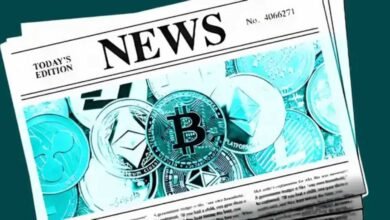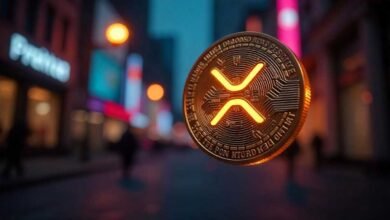
Looking Ahead: What’s Next for Ripple and XRP
As Ripple’s legal battle with the U.S. Securities and Exchange Commission (SEC) continues to unfold, the question on everyone’s mind is: What’s next for Ripple and XRP? With an extended appeal timeline and ongoing regulatory uncertainty, both Ripple Labs and XRP holders are left to navigate a path filled with ambiguity. However, there are several potential developments and key factors to consider in shaping the future of Ripple and its flagship digital asset.
In this section, we’ll dive into the likely scenarios that could impact Ripple, XRP, and the cryptocurrency market as a whole in the coming months and years.
1. The SEC Lawsuit: A Pivotal Legal Decision
The ongoing legal battle between Ripple and the SEC is undoubtedly the most significant factor influencing the future of XRP. The SEC’s claim that XRP is a security, while Ripple maintains that it is a digital currency, is a foundational issue in the case. Depending on how the court rules, this legal outcome could either open the door for greater adoption and clarity for XRP or create substantial hurdles for its continued use and growth in the U.S.
Ripple’s legal team remains confident in its defense, which emphasizes XRP’s utility in the global payments system and its status as a digital currency, rather than an investment asset. If Ripple prevails, it would mark a significant win not only for the company but also for the broader cryptocurrency market, as it could establish a clear precedent for how other digital currencies are treated under U.S. law.
On the flip side, a ruling in favor of the SEC would likely classify XRP as a security. This would create several challenges, including compliance with securities regulations, potentially leading to exchanges delisting XRP in the U.S. and restrictions on its use. Ripple would likely face penalties or fines, and other cryptocurrencies could also be scrutinized, potentially leading to a regulatory tightening that may stifle innovation in the industry.
As the case continues to unfold, Ripple’s fate will hinge on the legal proceedings, and the final decision could have far-reaching implications for XRP and other cryptocurrencies.
2. Regulatory Clarity: The Path to a New Legal Framework
Beyond the SEC lawsuit, the broader question of cryptocurrency regulation is a critical element in Ripple’s future. The ongoing legal challenges faced by Ripple and other digital asset companies have highlighted the need for clearer regulations that specifically address the unique characteristics of cryptocurrencies.
Ripple’s legal battle with the SEC could ultimately push for much-needed clarity in cryptocurrency regulations, particularly in the U.S. If Ripple wins its case, it could help establish a framework for understanding how digital assets like XRP should be classified—whether as securities, commodities, or something else entirely. This clarity would be vital for other cryptocurrency companies that are currently operating in regulatory gray areas.
A favorable ruling could encourage lawmakers and regulators to take a more nuanced and balanced approach to digital asset regulation. This could result in policies that foster innovation while providing protections for investors and users. On the other hand, a ruling against Ripple could lead to stricter regulatory oversight for the entire industry, creating challenges for digital asset firms and making it more difficult for new projects to flourish.
If the U.S. government creates a comprehensive regulatory structure that differentiates between various types of digital assets, Ripple and XRP could benefit from an environment that allows for continued growth and adoption, both domestically and internationally.
3. Ripple’s Global Expansion and Partnerships
Regardless of the legal outcome in the U.S., Ripple has continued to make significant strides in the global market. Ripple’s primary focus has always been on facilitating cross-border payments, and XRP’s role as a bridge currency remains central to the company’s vision. Ripple has secured partnerships with numerous financial institutions, including major banks and payment providers in markets around the world.
As Ripple continues to expand its network, RippleNet—Ripple’s blockchain-based payment system—has seen growing adoption by both traditional and digital financial services. Many international banks and payment providers are using RippleNet to enhance the speed and cost-efficiency of their cross-border payment solutions. This ongoing global adoption of RippleNet positions Ripple and XRP as a key player in the global payments space, with potential to disrupt traditional financial systems.
Moreover, Ripple’s partnerships are not limited to large banks. Ripple has also worked with companies in emerging markets, where traditional banking systems are less developed, to offer cheaper and faster payment solutions. This global push, coupled with RippleNet’s ability to facilitate seamless cross-border transactions, positions XRP as a valuable tool for enabling financial inclusion.
Should Ripple’s legal troubles be resolved favorably, its global reach could grow even further, with more financial institutions turning to RippleNet and adopting XRP as a bridge currency for international transactions.
4. Technological Advancements: Scalability and Efficiency
XRP has already proven to be one of the fastest and most scalable cryptocurrencies in the market, capable of processing up to 1,500 transactions per second. However, Ripple’s development team continues to focus on improving the network’s scalability and efficiency, ensuring that XRP remains competitive in an increasingly crowded market.
One area of focus for Ripple is expanding XRP’s use case beyond cross-border payments. Ripple is exploring new ways to integrate XRP into decentralized finance (DeFi) ecosystems, which have been growing rapidly. By integrating XRP with DeFi protocols, Ripple could open the door for new use cases and increased demand for XRP as a utility token.
Additionally, Ripple has worked on enhancing its technology to ensure low-cost transactions and greater interoperability with other blockchain networks. The company’s ongoing improvements to RippleNet and the XRP Ledger could further cement XRP’s role as a leading digital asset in the financial sector.
As the cryptocurrency landscape evolves, Ripple’s ongoing technological innovation will be key to ensuring that XRP remains relevant and valuable, even as new projects and digital assets emerge.
5. Market Dynamics and Investor Sentiment
The market dynamics surrounding XRP, and Ripple at large, will also play a pivotal role in shaping the future of both the company and its digital asset. Investor sentiment remains volatile, driven by the uncertainty of Ripple’s legal situation and broader market conditions. In particular, XRP has seen significant price swings, often in reaction to news related to the SEC lawsuit.
If Ripple wins the legal battle with the SEC, investor confidence in XRP could experience a substantial boost. A favorable ruling would likely lead to increased market participation and adoption, as more exchanges would be inclined to list XRP and more investors would be willing to take a position in the token.
However, should Ripple lose the case or face prolonged legal challenges, XRP’s price could face significant downward pressure, especially if exchanges are forced to delist the asset or impose restrictions on trading. Additionally, the legal cloud hanging over XRP could prevent institutional investors from engaging with the asset, further limiting its potential growth.
In a broader sense, market sentiment towards the entire cryptocurrency industry will also play a role in Ripple’s future. If the market continues to mature and regulatory clarity improves, more traditional investors may be willing to engage with digital assets like XRP, further driving demand.
6. Potential Ripple Acquisition or Partnerships
Another factor that could shape the future of Ripple and XRP is the potential for strategic partnerships or acquisitions. Given Ripple’s leading role in the cross-border payments space and its partnerships with financial institutions, the company may attract interest from larger corporations or technology firms that see the value in Ripple’s technology and network.
Ripple’s ongoing push for mainstream adoption could position it as an attractive acquisition target for larger fintech or financial services companies. This could result in a merger or acquisition that strengthens Ripple’s position in the market and provides additional resources to overcome legal hurdles.
Alternatively, Ripple could continue to expand its network of partnerships with fintech companies, governments, and payment providers, further solidifying its place in the global payments ecosystem. Such partnerships could increase the utility of XRP, boosting its value and long-term viability.
7. A Resilient Future for XRP
Despite the challenges Ripple has faced in its legal battle with the SEC, XRP has demonstrated resilience. XRP continues to be one of the top cryptocurrencies by market capitalization, and its real-world use cases in cross-border payments remain a driving force behind its continued adoption.
Looking ahead, XRP’s role in the global payments landscape is likely to evolve, with new use cases and applications emerging as the technology continues to mature. As Ripple navigates its legal battles and regulatory uncertainties, its ability to innovate and expand its global presence will play a critical role in determining whether XRP remains a dominant force in the digital asset space.
As Ripple’s appeal against the SEC continues, the road ahead remains uncertain, but the potential for Ripple and XRP is clear. Whether the legal battle results in a favorable ruling or further regulatory challenges, Ripple has already established itself as a major player in the global payments ecosystem. Its innovative technology, global partnerships, and commitment to improving XRP’s utility position the company to succeed in the long run.
The ultimate outcome of the Ripple vs. SEC case will shape the regulatory landscape for digital assets, not just for Ripple, but for the entire cryptocurrency industry. Regardless of the legal outcome, XRP’s future is intertwined with the ongoing development of blockchain technology, the evolution of global payment systems, and the broader adoption of digital currencies.
As we look ahead, the future of Ripple and XRP will undoubtedly continue to be a fascinating story of innovation, regulation, and resilience in the rapidly evolving world of cryptocurrency.


